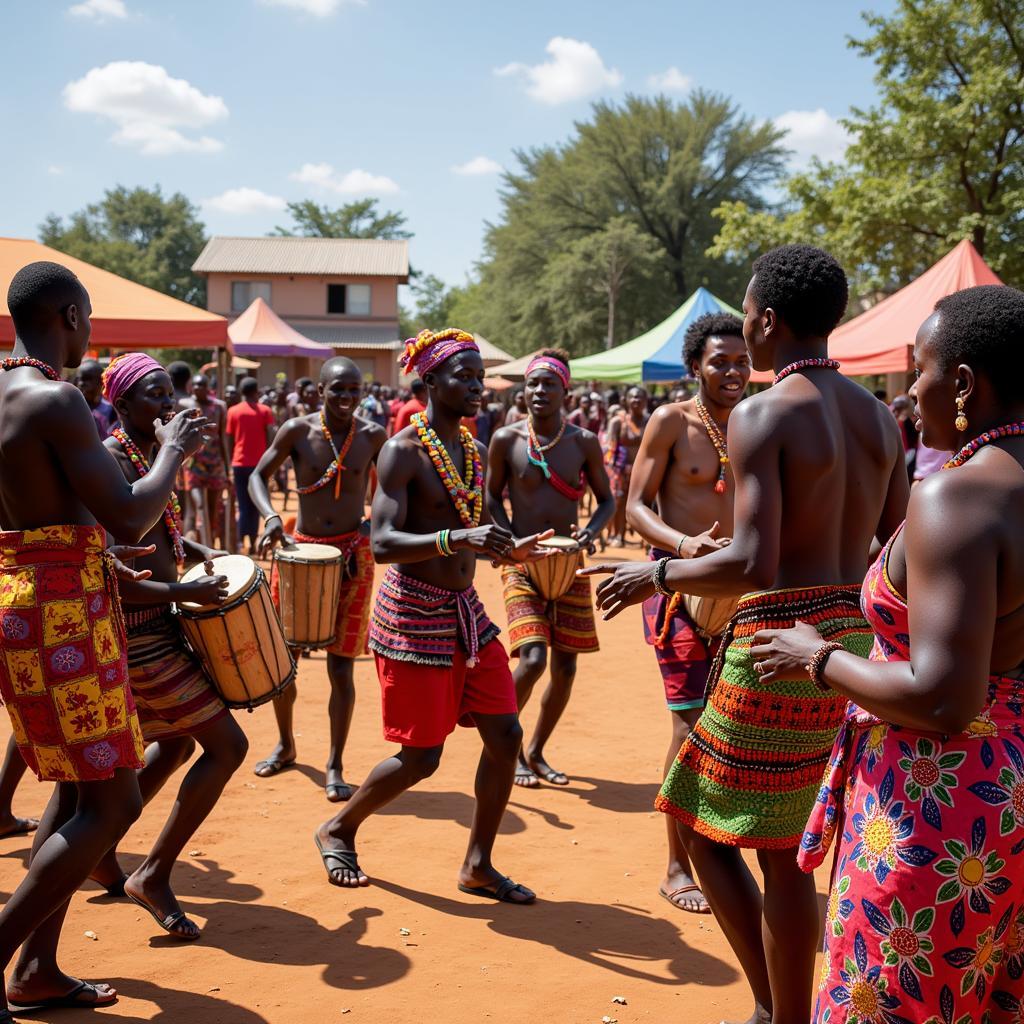Exploring African Food Chains: A KS2 Guide
African food chains are a fascinating way to understand how animals and plants interact in diverse ecosystems across the continent. From the savanna to the rainforest, energy flows from one organism to another, creating a delicate balance of life. This KS2 guide will delve into these intricate relationships, exploring different examples and explaining the key concepts behind them.
Understanding the Basics of African Food Chains
A food chain represents the transfer of energy from a producer (like a plant) to a consumer (like an animal). It starts with the sun, which provides energy for plants to grow through photosynthesis. These plants then become food for herbivores, which are animals that eat plants. Herbivores, in turn, are eaten by carnivores, animals that eat meat. Finally, decomposers, such as fungi and bacteria, break down dead plants and animals, returning nutrients to the soil to start the cycle anew. Understanding these basic principles is essential for grasping the complexities of African food chains.
Producers: The Foundation of African Ecosystems
Africa boasts a remarkable variety of plants, forming the base of numerous food chains. From the iconic acacia trees of the savanna to the lush vegetation of the Congo rainforest, these producers convert sunlight into energy, providing sustenance for a vast array of herbivores. Grasses, shrubs, and even algae play vital roles in these ecosystems.
Herbivores: The Plant-Eaters of Africa
African herbivores range from small insects like grasshoppers to massive mammals like elephants. These animals have adapted to consume different types of plants. For example, giraffes have long necks to reach the leaves of tall trees, while zebras graze on the abundant grasses of the savanna. Understanding these adaptations helps us appreciate the interconnectedness within food chains.
Examples of African Food Chains KS2
Let’s explore some specific examples of African food chains:
- Savanna Food Chain: Grass -> Zebra -> Lion -> Decomposers
- Rainforest Food Chain: Fruit -> Monkey -> Leopard -> Decomposers
- Desert Food Chain: Cactus -> Camel -> Hyena -> Decomposers
Carnivores: The Apex Predators of Africa
Lions, leopards, cheetahs, hyenas, and wild dogs are just a few of the powerful carnivores that roam Africa. These apex predators play a crucial role in regulating populations of herbivores. They are essential for maintaining the balance within their respective ecosystems.
Decomposers: The Recyclers of African Ecosystems
Fungi, bacteria, and other decomposers are often overlooked, but they are critical components of African food chains. By breaking down dead organisms, they release essential nutrients back into the soil, allowing plants to grow and the cycle to continue.
What Happens When a Food Chain is Disrupted?
Changes in one part of a food chain can have ripple effects throughout the entire ecosystem. For instance, if a drought kills off a significant portion of the plant life, herbivores will struggle to find food, leading to a decline in their population. This, in turn, will impact the carnivores that rely on them for sustenance. Understanding these interconnected relationships is vital for conservation efforts.
Conclusion: The Importance of African Food Chains KS2
African food chains offer a compelling look into the intricate web of life across this diverse continent. By understanding how energy flows from producers to consumers and the vital role of decomposers, we can appreciate the delicate balance of these ecosystems. Protecting these food chains is crucial for preserving the incredible biodiversity of Africa for generations to come.
FAQ
- What is the primary source of energy in an African food chain? (The sun)
- What is an example of a producer in the African savanna? (Grass)
- What is the role of decomposers in a food chain? (They break down dead organisms and recycle nutrients.)
- What is an example of a carnivore in the African rainforest? (Leopard)
- What can happen if a part of a food chain is disrupted? (It can affect the entire ecosystem.)
- What are some examples of herbivores in the African desert? (Camels, gazelles)
- Why is it important to learn about African food chains? (To understand the interconnectedness of living things and the importance of conservation.)
For any further assistance, please contact us: Phone: +255768904061, Email: [email protected] or visit us at: Mbarali DC Mawindi, Kangaga, Tanzania. We have a 24/7 customer service team.

